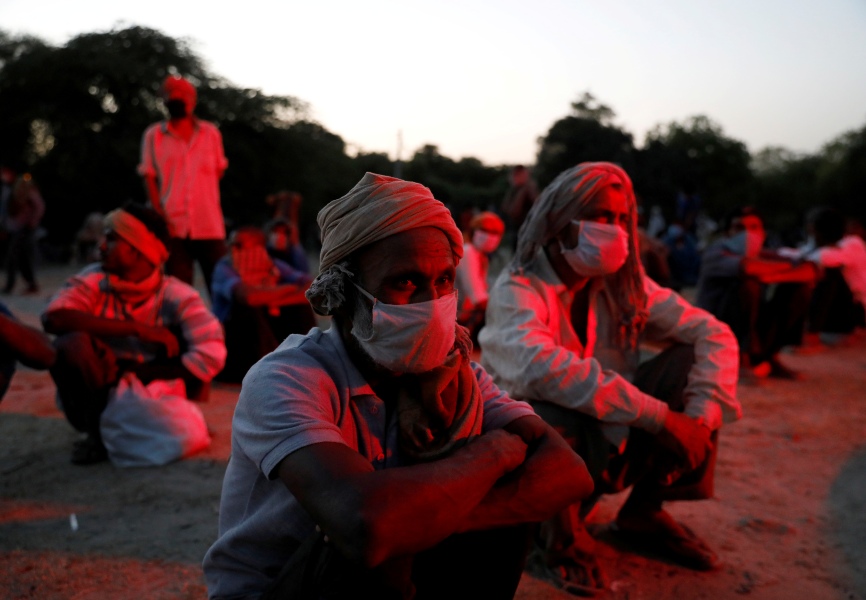Prime Minister Narendra Modi this week extended a near total lockdown on India's 1.3 billion people through 3 May. After some delays, the initial stay-at-home order was given with just a few hours' notice on 24 March, and since then Modi has sought to project the image of a decisive leader in charge of the situation. He has also doubled down on the Hindu nationalist playbook he and his Bharatiya Janata Party have increasingly used to shore up public support. As Eurasia Group expert
Akhil Bery explains, stoking religious tensions is a high risk move in a country with a long history of sectarian violence.
Authorities grappling with mounting problems
India's economy was already under strain prior to the coronavirus outbreak and the steps taken to contain it. The government estimates GDP growth was 5% last fiscal year (April 2019–March 2020), the slowest rate in six years and a disappointing outcome for a developing country trying to lift millions out of poverty. Unemployment hit a 45-year high of 6.1%. The stay-at-home order has quashed hopes the economy might have been about to turn a corner. The International Monetary Fund has downgraded its forecast for the current fiscal year to 1.9%, and many independent economists predict lower growth than that.
Moreover, the lockdown triggered a migration crisis of a magnitude not seen since partition, which created India and Pakistan in 1947. Rushed and poorly coordinated, the order forced 500,000–600,000 people to evacuate the nation's cities and head for their hometowns, but with no way to get there other than walking for days (owing to the suspension of public transportation). Many of them were daily-wage laborers left without an income. The lack of effective planning has also led to a breakdown in supply chains, causing shortages and rising prices for some essential goods, including food.
Anti-Muslim rhetoric as a political tool
Facing this array of challenges, Modi and the BJP have been trying to rally the support of the Hindu-majority population with attacks on the country's Muslims, a dangerous tactic Eurasia Group warned about in its
Top Risks 2020: Coronavirus Edition report. A large portion of the country's confirmed Covid-19 cases (about 10%) have been linked to a gathering of more than 3,000 people in Delhi held by the Islamic missionary group Tablighi Jamaat in early March (the capital was already on high alert then but not yet on lockdown). Since then there has been an uptick in anti-Muslim rhetoric on social media, likely inflamed by the BJP's loosely affiliated team of cyber warriors. Examples of trending hashtags on Twitter include #CoronaJihad and #TablighiVirus.
Many TV channels have latched on and started blaming the Tablighi Jamaat for spreading coronavirus, using terms such as “coronabomb” and calling its leader a “mastermind,” even though other religious groups also held large gatherings after the coronavirus alarm had been raised. For example, a Sikh preacher was the first to be branded a “super spreader,” yet Sikhs have not come under as much scrutiny for spreading coronavirus. The only ones being singled out are Muslims. This divisive rhetoric may deflect public anger away from Modi's government and its handling of the outbreak, but it significantly heightens social divisions and raises the risk of Hindu-on-Muslim violence.
Lockdown keeping a lid on tensions, for now
So when it comes time to lift the stay-at-home order, the risks of violence will rise significantly, though movement restrictions will likely be unwound in a phased approach across states to ensure there is not a sudden spike of new coronavirus cases, which could also help contain any unrest. Despite the lockdown, there have already been reports of anti-Muslim violence.
In the meantime, it is likely that Modi-supporting TV channels and social media activists will fan the flames of sectarianism. With mounting economic hardships, Modi will likely rely on Hindu nationalism to keep his base motivated, especially ahead of state elections later this year and in 2021. The prime minister has not publicly intervened to urge individuals to stop spreading hatred against Muslims, nor has any senior BJP official. Uttar Pradesh and Bihar are the most likely states to experience episodes of anti-Muslim violence. Both have a history of religious tensions and are now experiencing an influx of migrants who have lost their livelihoods, creating a volatile situation.
Economic support measures could help to defuse tensions, though the government has been timid in its policy response so far, offering a $21 billion relief package for the rural economy (equivalent to about 1% of GDP) with a mix of direct cash transfers and increased food subsidies. Support for businesses has been limited, though the Reserve Bank of India has taken liquidity-boosting measures to make sure the banking system continues to operate smoothly. The government is expected to soon offer more assistance for small businesses and potentially for larger corporates as well, but it is widely acknowledged that the current measures are insufficient.
Learn more:

 Daily wage workers and homeless people in Delhi, India, after an extension of the nation's lockdown. REUTERS.
Daily wage workers and homeless people in Delhi, India, after an extension of the nation's lockdown. REUTERS.
